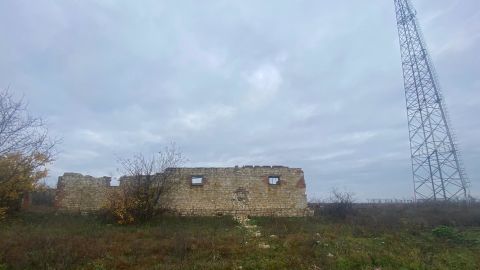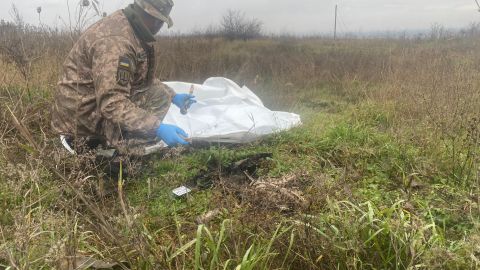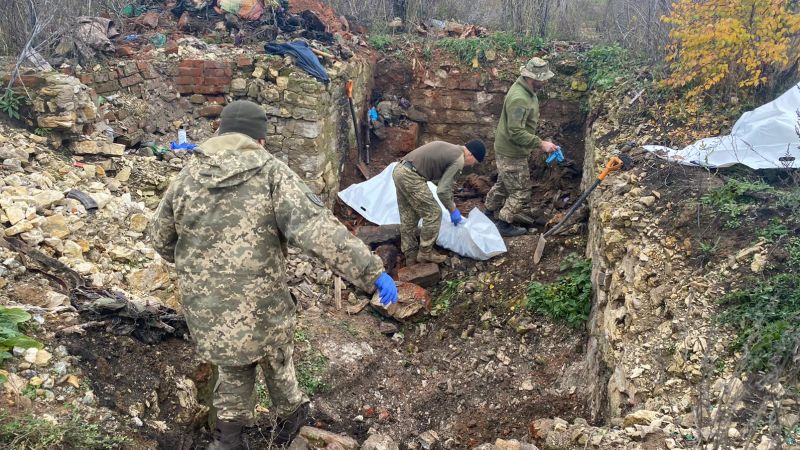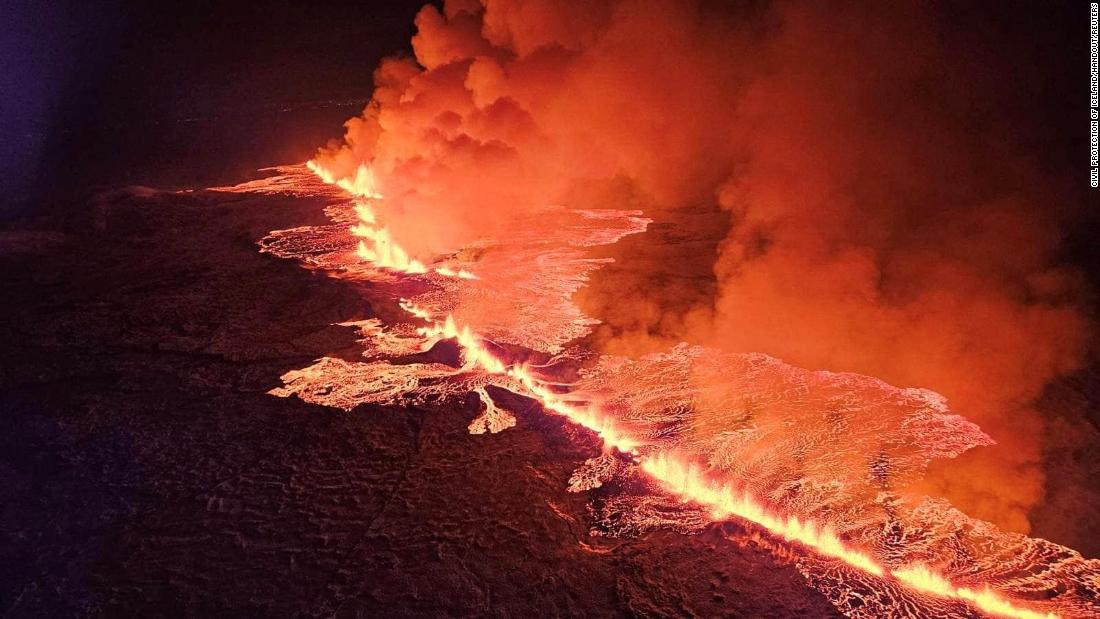‘You can come home now:’ Ukraine’s recovery teams work to ensure no fallen soldiers are left behind

Editor’s Note: Warning: This story contains disturbing images.
Brashkivka, Ukraine
CNN
—
Before the war, kitted out in “Red Army” attire, Leonid Bondar re-enacted great Soviet battles of World War II – where they were fought, who won them and who fell where – all facts he knew intimately.
His job at Ukraine’s museum of war history took him across the country as he recovered remains of fallen WWII soldiers.
On today’s battlefields, Bondar’s skills are a vital part of the embattled nation’s war efforts as it resists Moscow’s invading forces, finding and bringing home Ukraine’s fallen heroes.
He is a modest man, who plays down his role, saying he does it for the fighters’ families and for the country.
By late August, Ukraine’s military acknowledged more than 9,000 dead; a month later, President Volodymyr Zelensky said 50 soldiers were dying every day.
Bondar’s unit, originally called “home on your shield,” was founded in part on the myth about Spartan mothers two-and-a-half millennia ago telling their warriors “Come back with your shield… or on it.”
The CNN team meets him on a damp, chilly, windswept ridge above the now-pulverized village of Brashkivka, in eastern Ukraine, where rolling fields filled with decaying, unpicked crops stretch darkly toward distant woods.
A yellow stone barn surveys the scene he has come to unravel; its two windows are rimmed in weathered wood, while a shell has punched a hole in the wall.
It was a great vantage point and hellish place to defend. The mangled cellphone tower behind the bunker where the Ukrainian soldiers likely died would have been an excellent marker for enemy artillery. Six are missing, believed dead.
The location is a silent reminder that war is cruel, robbing the living of their lives, their loved ones of peace. Every battlefield has a place where unspent time is buried, where colors fade, and final seconds have stories waiting to be told.
In the battle that took place four months ago for the ridge line near Brashkivka, the tiny field by the cell tower and barn is that place.

Bondar and his two colleagues are the first soldiers to search for the fallen men since Ukrainian troops retook the area from Russian forces six weeks ago.
Video shared by the soldiers Bondar has come to find depicts happy moments before their stories stop. Shafts of sunlight puncturing the wood and mud roof of their basement bunker, just a few feet from the cell tower, hint at the danger they were in.
The roof was not strong enough to take a direct hit, says Bondar. On an early assessment of the site, he suspects two of the men were likely blown out of the bunker by the shell blast, the others probably buried by fallen masonry and dirt inside.
Before they can test that theory, they give the site a thorough search for mines and booby traps. Bondar shows CNN one of the much-feared anti-personnel mines: it pops out of a protective cylinder, stands on thin sensitive legs, triggered by movement nearby, and is deadly at a range of 15 meters.
Once the site is declared safe, Bondar’s search begins to tell the soldiers’ stories, revealing some of his worst fears.
Metal hinges and screws from wooden ammunition cases, mixed with bone fragments, lie in rusting, charred piles a few meters from the bunker.
Bondar surmises that the bodies thrown by the blast were burned, not buried, by the Russians. This, he says, is “not the first time we have encountered a situation where the norms of humanity are neglected and soldiers are not properly buried.”

A few meters away, partially hidden in the long grass that grows around, lies a human spine and pelvis. For Bondar, the heat-bleached bones are exactly what he’s been looking for, and he carefully places them in a heavy, white plastic forensic body bag.
His rubber-gloved fingers search the dirt for every fragment, each piece a source of DNA and potential solace for grieving families. He spots a ring, and out loud, thanks the fallen soldier for helping to identify himself.
Meanwhile, his teammates have been shoveling crumbled rock and accumulated dirt out of the bunker in the hopes of finding the other soldiers.
Small bone fragments hint they might be searching in the right place for three or possibly four, soldiers huddled or blasted to one end of the bunker, but it’s still too soon to know.
It’s heavy work. Bondar and his team have their jackets off, heaving shovelfuls of debris above their heads and out of the collapsed bunker.
As they work, other Ukrainian soldiers approach and tell the team they’ve discovered a lone dead Russian soldier in a burned-out vehicle about half a mile away.
The body, found burned and charred in the back of a destroyed armored personnel carrier, is also gently lifted in to a white body bag. The Russian’s location, even the vehicle’s VIN number and other details, are carefully recorded. His body is treated with the same respect as those of the Ukrainians’ own fallen countrymen.
Back in the bunker, as layers of dirt are slowly removed and shovels are switched for small trowels and tiny picks, the outline of three soldiers, broken and pressed against the red-brick bunker wall, emerge. Hints of knees and heads, then hunched shoulders, a hand still clutching a rifle.
“You can come home now,” Bondar whispers, as the first body is eased free and gently laid in the waiting white bag.
They check the pockets of the second soldier dug out of the mud, a ribbon in his breast pocket along with an ID card. He was 32 years old when he died. “Thank you for helping us,” Bondar tells the body.
As we leave, one body is still missing, but Bondar vows to search on. The only certainty here is that as long as the war continues, his job will be far from done.







